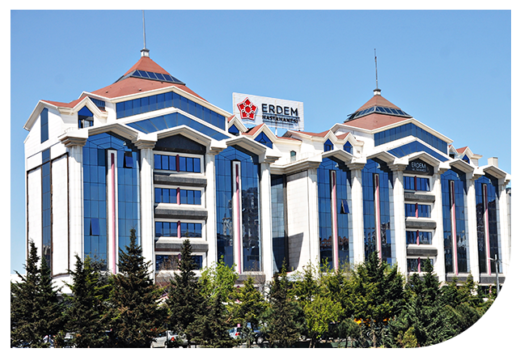A persistent flush on your cheeks. A breakout that looks like acne, but doesn’t respond to typical treatments. Skin that stings, burns, and turns red at the slightest provocation. For millions of people worldwide, this isn’t a passing irritation, it’s rosacea.
Often misunderstood as a cosmetic issue or adult acne, rosacea is actually a chronic inflammatory skin condition that can worsen over time if left untreated. But with the right care, it’s possible to calm the redness, reduce flare-ups, and reclaim confidence in your skin.
What Is Rosacea?
Rosacea is a long-term skin condition that primarily affects the face, causing redness, visible blood vessels, bumps, and irritation. It usually appears on the cheeks, nose, chin, and forehead, though it can also affect the eyes in some cases.
While rosacea is most commonly seen in adults between the ages of 30 and 50 especially those with fair skin it can affect anyone.
There are four main subtypes of rosacea, and they often overlap:
- Erythematotelangiectatic Rosacea – Persistent facial redness and visible blood vessels
- Papulopustular Rosacea – Red bumps or pimples resembling acne
- Phymatous Rosacea – Skin thickening, often on the nose (rhinophyma)
- Ocular Rosacea – Red, dry, irritated eyes, often mistaken for conjunctivitis
Many people experience a cycle of flare-ups and remissions, with symptoms intensifying in response to environmental or internal triggers.
What Causes Rosacea?
The exact cause of rosacea is still unclear, but it’s believed to involve a combination of factors:
- Genetics – Family history plays a significant role
- Immune system overactivity – Abnormal inflammatory response in the skin
- Microorganisms – Especially Demodex mites or Helicobacter pylori bacteria
- Vascular abnormalities – Increased blood flow and fragile blood vessels in the skin
- Skin barrier dysfunction – Increased sensitivity to environmental stimuli
Rosacea is not contagious, and it’s not caused by poor hygiene but it is a condition that requires long-term management.
Common Triggers That Worsen Rosacea
Many people with rosacea find that specific lifestyle or environmental factors cause their symptoms to worsen. These triggers vary from person to person, but the most common include:
- Sun exposure
- Hot or spicy foods
- Alcohol (especially red wine)
- Stress and emotional extremes
- Extreme temperatures (heat or cold)
- Wind or humidity
- Hot beverages
- Strenuous exercise
- Certain skincare products or cosmetics
Identifying and avoiding personal triggers is one of the most important steps in managing rosacea effectively.
Recognizing the Symptoms
Rosacea doesn’t always start dramatically. Early signs are often subtle and misinterpreted:
- Flushed cheeks that don’t fade
- Frequent blushing
- Skin that burns, stings, or feels tight
- Red bumps that resemble acne but don’t respond to acne treatments
- Eye irritation, dryness, or redness
- Thickening of skin, especially around the nose
Without treatment, rosacea may progress so early recognition is key.
How Is Rosacea Diagnosed?
There’s no single test for rosacea. Diagnosis is usually clinical, based on the appearance of your skin and a discussion of your symptoms and flare-up patterns.
A dermatologist may also rule out other conditions that resemble rosacea, such as acne, lupus, seborrheic dermatitis, or perioral dermatitis.
In some cases, additional tests may be done to check for Demodex mite overgrowth or bacterial involvement.
Rosacea Treatment Options
While rosacea cannot be cured, it can be managed effectively with a personalized treatment plan. Common therapies include:
- Topical medications: Such as metronidazole, azelaic acid, ivermectin, or brimonidine (to reduce redness)
- Oral antibiotics: Like doxycycline or minocycline for anti-inflammatory effects
- Laser and light therapy: To reduce visible blood vessels and persistent redness
- Skin barrier repair: Using gentle, non-irritating skincare to protect and calm the skin
- Lifestyle modifications: Trigger management, sun protection, and diet adjustments
For ocular rosacea, treatment may also involve eye drops, eyelid hygiene routines, or oral antibiotics.
Consistency is critical; rosacea treatment is a marathon, not a sprint.
Skincare Tips for Rosacea-Prone Skin
People with rosacea often have sensitive skin, and what you apply to your face can make a big difference. Keep these skincare principles in mind:
- Choose fragrance-free, hypoallergenic products
- Use gentle, non-foaming cleansers
- Always wear broad-spectrum SPF 30+ sunscreen
- Avoid alcohol-based toners and astringents
- Test new products on a small patch of skin before applying to your whole face
- Moisturize daily to strengthen the skin barrier
If in doubt, a dermatologist can help you build a skin routine that supports treatment without causing irritation.
Managing the Redness Inside and Out
Rosacea isn’t just a skin condition it can affect self-esteem, social comfort, and emotional well-being. Many people feel embarrassed or frustrated by persistent redness or flare-ups, especially when the cause isn’t always obvious.
That’s why treating rosacea is about more than creams and prescriptions it’s about understanding your skin, building a treatment relationship with a trusted doctor, and learning how to care for yourself gently in the process.
If you’re struggling with facial redness, unexplained bumps, or eye irritation that won’t go away, the dermatology team at Erdem Hospital offers personalized diagnostics, evidence-based therapies, and skin-focused support to help you regain control and feel confident in your skin again.

